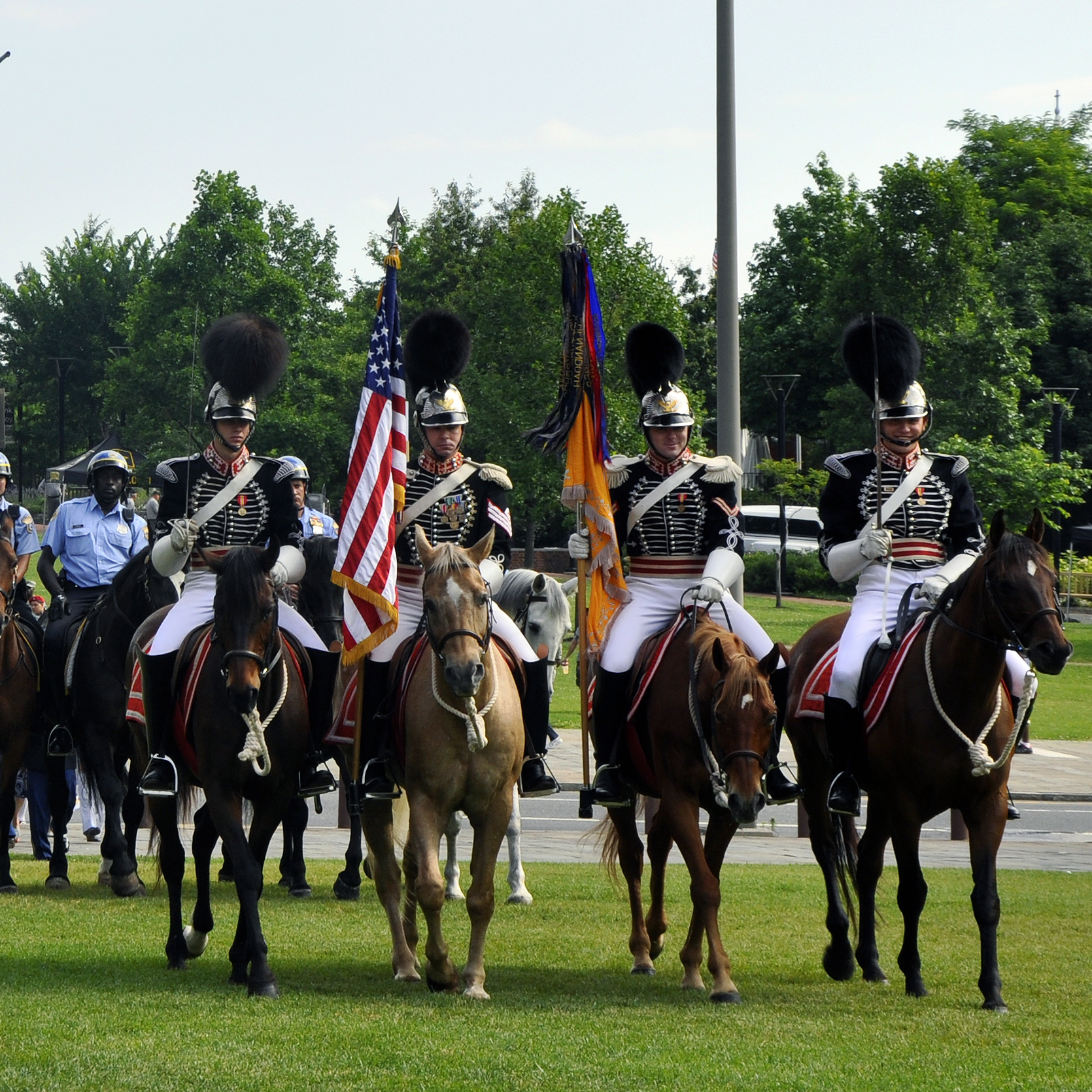Once upon a time, Sebastian compared the historical concept of a militia to something like that of a modern volunteer fire department. I thought that was a pretty good analogy at the time, but since then I’ve learned that Philadelphia actually has a private military organization. The First Troop Philadelphia City Cavalry is a purely volunteer, privately organized cavalry troop that has been called into federal military service as needed since 1774.
Our opponents in the gun control movement have often derided the idea of “private militias,” even though they played a significant role in the founding of this country. The history page of the First Troop notes that even though they had been operating in defense of  Philadelphia alongside the Continental Army, it wasn’t until 1811 that “a law was passed authorizing a regimental organization of the cavalry.” They weren’t even incorporated under state law until 1863.
Today First Troop requires prospective members to also be currently serving in the National Guard, but reading the troop’s history page is an interesting look back at volunteers who felt a duty to country and community. As our founders understood it, the concept of a privately organized citizen militia was not about “insurrection,” as our opponents claim, but about service.


I have developed very mixed emotions about the “militia” concept in American history.
First, I’ll stipulate that in our early days, a community self-defense force was an absolute necessity.
But, I have come to wonder if in fact, they were more often the square-jawed heroes represented by the Minutemen of Lexington and Concord, or, the armed enforcers for local economic interests. For example, militias in the 19th century often served as strike-breakers, violently suppressing via massacre efforts by immigrant laborers (typically miners) to organize against exploitation, and the organization that appears to have murdered about 60 Irish immigrant railroad workers at “Duffy’s Cut” near Malvern in the 1830s was effectively a local militia, nominally organized to pursue horse thieves. Also, militias often served as slave catchers in the southern states.
If anyone cares to condemn that line of thinking, thank Larry Pratt, who some time ago wrote a glowing essay praising the “citizens militias” organized by Luis Rios Montt in Guatamala to suppress “leftists.” Those militias were in fact death squads, and Montt was subsequently convicted in and by his own country as responsible for the slaughter of 200,000 peasants. It was Pratt’s essay that got me to thinking, and looking at our own history from a different perspective.
The analogy to volunteer fire companies is also interesting, and may be better than intended, as urban volunteer fire companies were often in fact gangs serving competing political and economic factions, who spent more time street-fighting than fighting fires.
I suppose it could reduce to a question of simple statistics, if they could be had: Did militias more often do good, or bad, or can their behavior be generalized at all?
Oops, make that EfraÃn RÃos Montt.
Here is Larry Pratt’s essay.
There were others.